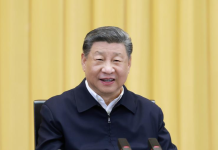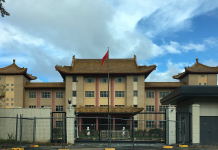BEIJING: Shortly after taking office as the top leader of the Communist Party of China (CPC), Xi Jinping elaborated on the Chinese dream. “Achieving the rejuvenation of the Chinese nation has been the greatest dream of the Chinese people since the advent of modern times,” Xi said during a visit to an exhibition on November 29, 2012.
The phrase, “the great rejuvenation of the Chinese nation,” was first expressed by then President Jiang Zemin in 2001, in a speech marking the 80th anniversary of the founding of the CPC. Since its introduction, it’s become a stock phrase used to describe the fundamental mission of the Party, state and people, as well as the context through which achievements are assessed.
Although Jiang was the first to express it this way, there were many historical antecedents. For example, Dr. Sun Yat-sen, regarded as the “father of modern China” by both the mainland and Taiwan, founded the Revive China Society in 1894, in the wake of mounting losses in the First Sino-Japanese War (1894-95). Sun’s objective was to expel the Manchu-led Qing Dynasty (1644-1911), revive Zhonghua, or China under Han Chinese rule, and establish a unified government. While the Qing effectively suppressed the Revive China Society with support from the British, it merged with the Tongmenghui, the Chinese United League, in 1905, consisting of several revolutionary groups, including the Guangfuhui, the Restoration Society.
–The Daily Mail-Beijing review news exchange item






